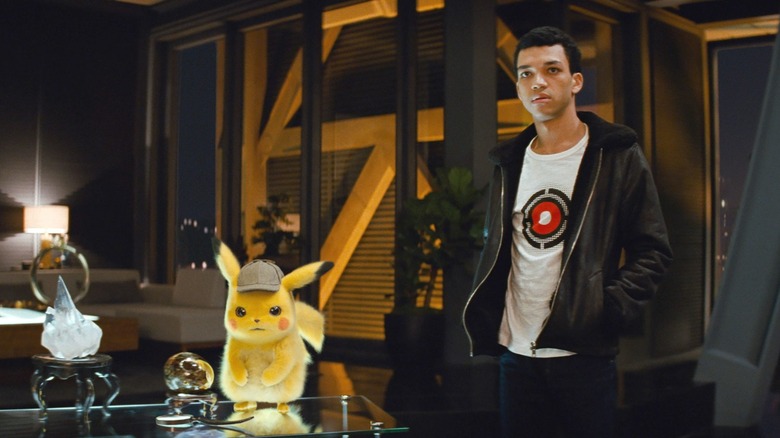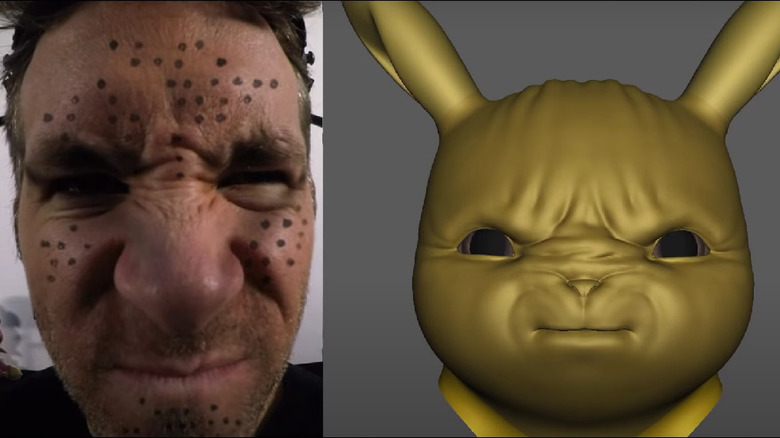Ryan Reynolds' Detective Pikachu Co-Stars Didn't Have Much To Work With
When "Detective Pikachu" released in 2019, it was a first for the anime franchise. The fantastic beasts and those who trained them had been animated and rendered before in long-running series and video games, but director Rob Letterman was at the helm of not only the first live-action Nintendo game adaptation since 1993, but the first Pokémon feature with photorealistic live-action. This presents its own challenges for the actors who, at times, had to act against nothing more than an earwig whisper and a memory.
Detective Pikachu vaguely follows the 2016 Nintendo 3DS video game of the same name, which assigns its players to work in tandem with a talking Pikachu and solve mysteries with the mousy yellow mascot. Letterman's adaptation sees Tim Goodman (Justice Smith) as the player avatar who finds himself tag-teaming with the electric Pikachu (whom only Goodman can understand) to investigate the disappearance of Tim's father Harry.
The CGI animation, courtesy of Moving Picture Company, Framestore, Image Engine, Rodeo FX, and Instinctual VFX, was instrumental in bringing over 60 Pokémon types to the big screen, but it created challenges for the actors involved. Speaking to IGN, Justice Smith revealed that he had to commit a lot more than just lines to memory.
It was super effective!
Ryme City, a fictional utopia loosely based on London, New York, and Tokyo is where Pokémon and humans live together harmoniously, and that means lots of creatures and lots of eyelines for the actors to react to. Using earwig radio pieces and recall of not only his own lines but those of his creature co-star, Smith had to act with — as the old Mearns poem goes — a man who wasn't there.
Smith tells IGN:
We basically went through the whole film with Ryan [Reynolds] on a soundstage, with Ryan in a motion-capture helmet, and so I got to see how he improvised, what he was gonna do, what he was gonna say, how he was gonna act. And then we have a reader who reads Ryan's lines, but I essentially have to remember what Ryan did on ... that day. And then do my side of it, when we're shooting. And things change around, and they're gonna fix some stuff in post with Ryan, but for the most part it comes down to memory. We also recorded the tape so I can listen to them back, and remember what he did. But it's just the whole team trying to work together, and they have been. It's a really difficult beast.
Reynolds had his own challenges, wearing a camera-helmet to pick up the full spectrum of facial expressions to create what MPC Film VFX Supervisor Pete Dionne calls a "hybrid set" — all before the character was integrated onscreen. In the meantime, Smith would either use the above-mentioned method or act against a "stuffie" puppet that could only act as well as the puppeteer could.
The result of the collaborative effort made a bigger box-office splash than Magikarp ever could, breaking both video game adaptation records and the dreaded "video game curse."

